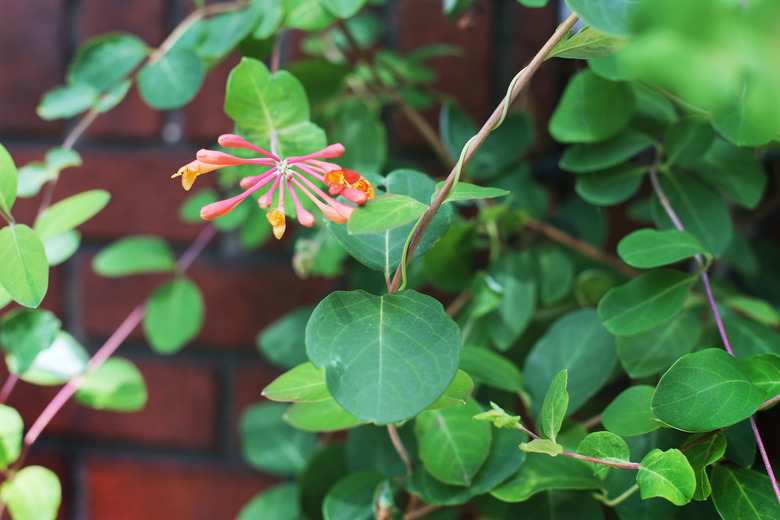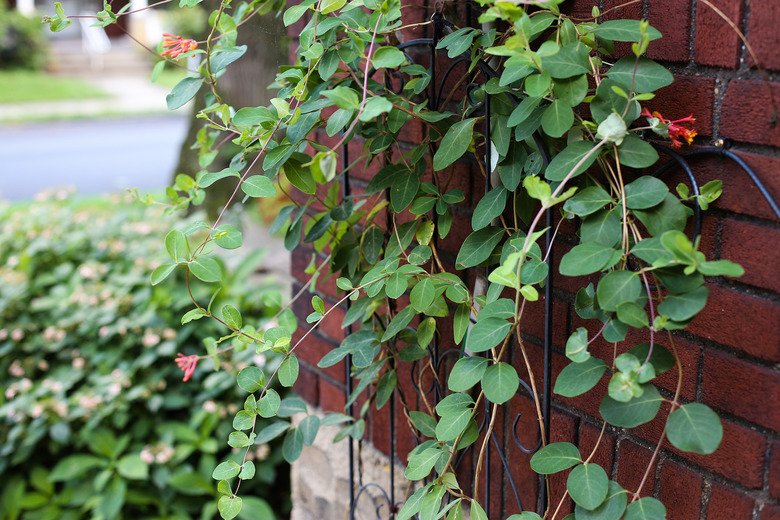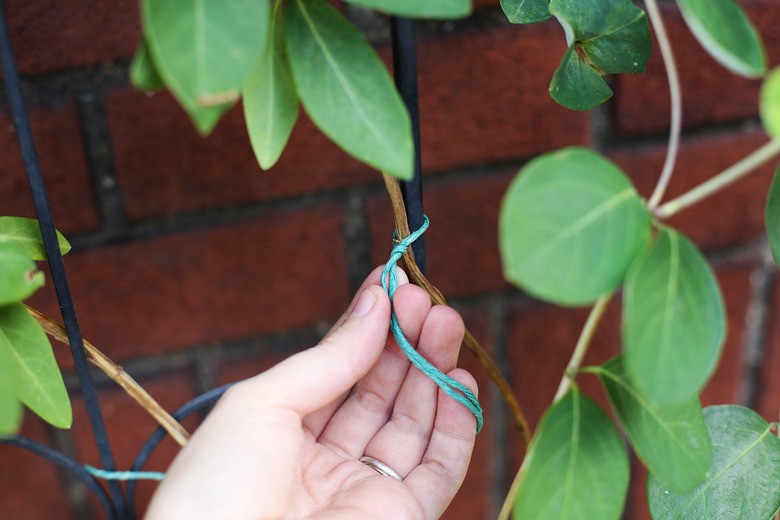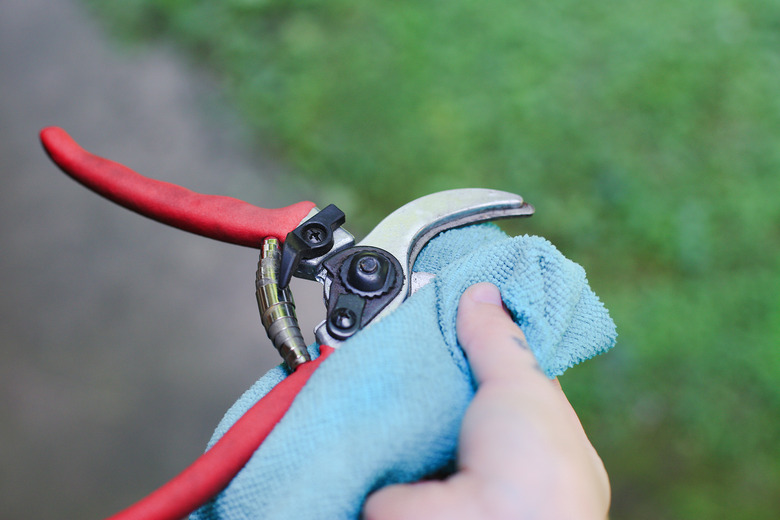About Honeysuckle Vine Pruning
Honeysuckle (Lonicera spp.) pruning serves several purposes: to train the plant as a privacy screen, to limit horizontal or vertical growth, or to shape the plant to suit a container or cover a wall. Severe pruning can correct bare areas on the vine. Honeysuckles potentially grow in U.S.
Honeysuckle (Lonicera spp.) pruning serves several purposes: to train the plant as a privacy screen, to limit horizontal or vertical growth, or to shape the plant to suit a container or cover a wall. Severe pruning can correct bare areas on the vine. Honeysuckles potentially grow in U.S. Department of Agriculture plant hardiness zones 4 through 10, depending on the species and cultivar.
Variety Variations
The 180 honeysuckle species include shrubs as well as climbers, and the vines vary in their growth rates. Japanese honeysuckle (Lonicera japonica) grows outdoors year-round in USDA zones 4 through 10. It's a fast-growing vine and requires aggressive pruning to keep it in shape and prevent it from becoming invasive. It's best to prune the vine in fall or winter when the plant is dormant, although you can prune it at any time of the year.
- Honeysuckle (Lonicera spp.)
- pruning serves several purposes: to train the plant as a privacy screen, to limit horizontal or vertical growth, or to shape the plant to suit a container or cover a wall.
Native Honeysuckles
Native honeysuckle vines, such as coral honeysuckle (Lonicera sempervirens), which grows in USDA zones 4 through 9, won't take over your yard. This colorful vine is also called trumpet honeysuckle and cultivars include "Dropmore Scarlet" and "Alabama Crimson." Tie it to a trellis or other support structure to train it. Prune it after the peak of its spring flowering, cutting it back as much as you want, such as within 2 feet of the ground. Train the new growth by tying the vines onto a trellis and pinching it back to maintain its upward growth and shape.
Preventing Problems
On older and fast-growing vines, cut back the top portion of the vine to allow more light to the lower leaves. This helps to prevent or correct the tendency of the lower parts of the honeysuckle becoming bare. Cutting the vine back to 1 to 2 feet tall encourages the plant to produce new growth. Cutting the honeysuckle back each year helps control the invasive tendency of fast-growing varieties. The best time for severe pruning is late winter. If you cut a honeysuckle vine back severely, it won't bloom in the upcoming flowering season.
- Native honeysuckle vines, such as coral honeysuckle (Lonicera sempervirens), which grows in USDA zones 4 through 9, won't take over your yard.
- Prune it after the peak of its spring flowering, cutting it back as much as you want, such as within 2 feet of the ground.
Pruning Practices
Sterilize your garden clippers before and after pruning by wiping the blades with a cloth soaked in household disinfectant. This reduces the risk of spreading diseases or pests. Regular pruning shears work well for most honeysuckle vine pruning tasks. If you have an old vine with thick, woody areas, loppers cut through the vines more easily. Your honeysuckle vine can climb vertically or provide ground cover based on how you prune it.
References
- New Mexico State University: Pruning Honeysuckle Vine
- University of Illinois Extension: Pruning Honeysuckle
- Fine Gardening: Genus: Honeysuckle — Lonicera
- Fine Gardening: Japanese Honeysuckle (Lonicera Japonica)
- Fine Gardening: Coral Honeysuckle (Lonicera Sempervirens)
- Southern Living: Pruning Trumpet Honeysuckle




